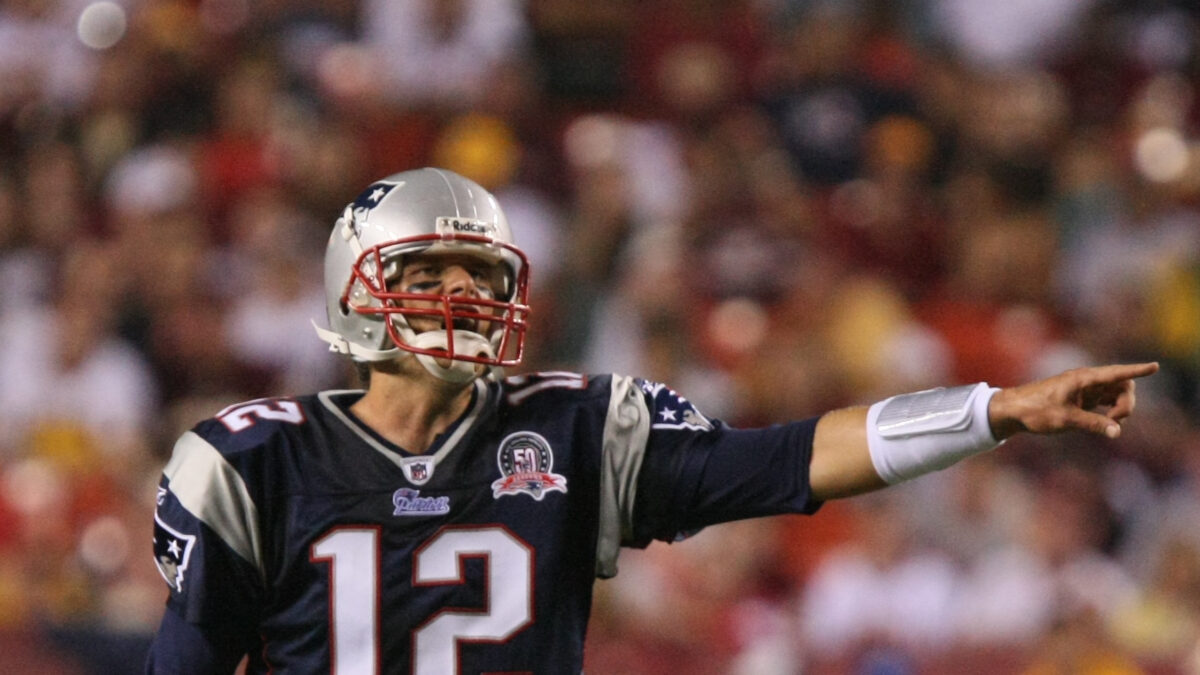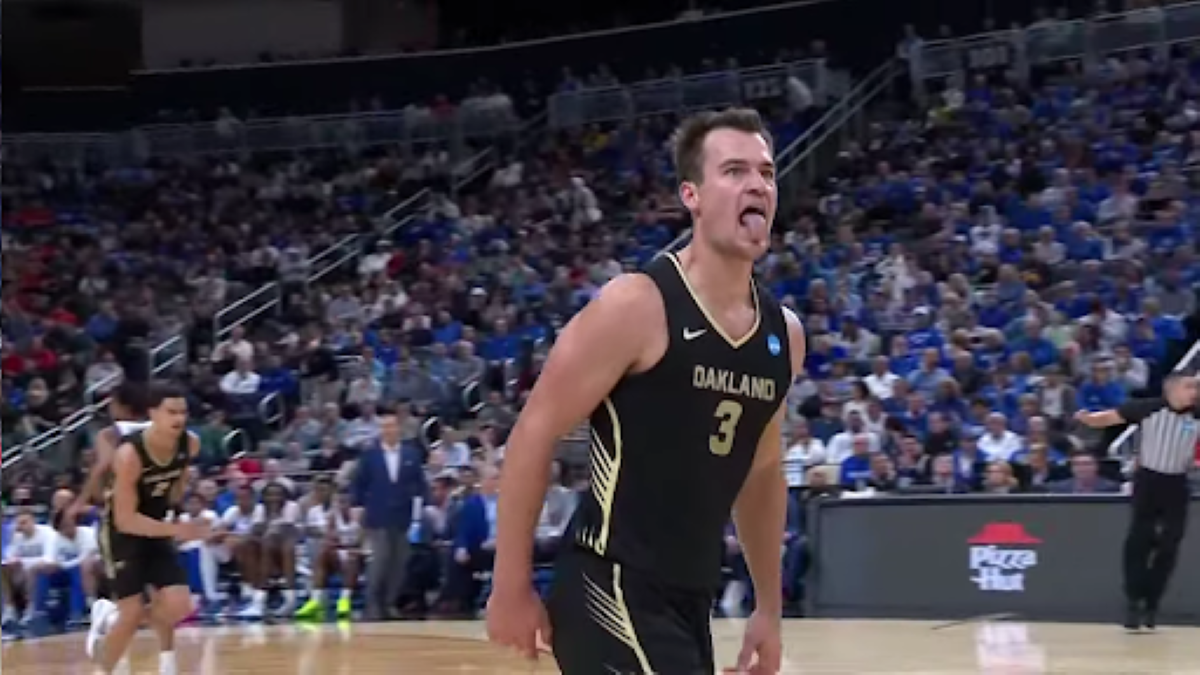It remains controversial 20 years later. In recent weeks, it arguably influenced the hiring of Josh McDaniels as Oakland Raiders head coach. Given that it helped launch the career of Tom Brady, who just announced his retirement, it’s as relevant as ever.
The latest installment of ESPN’s “30 for 30” series, “The Tuck Rule,” examines the circumstances that led to the (in)famous incident in the waning stages of a game in the 2001-02 NFL playoffs. It also explores the way this one incident affected the lives of the two players involved.
In an ironic twist, they had played together a few years before the incident at the University of Michigan. The fact that the two came together for the documentary gave the film a subtle yet unmistakable signal about the value of sportsmanship and friendship in athletics.
Former Teammates on a Snowy Field
The former Michigan Wolverines, Brady and cornerback Charles Woodson, reunited at Brady’s mansion in Tampa to watch film of the game. The last game ever played at Foxboro Stadium, the Jan. 19, 2002 clash between Brady’s New England Patriots and Woodson’s Raiders took place in a winter wonderland, with several inches of snow falling during the game on a chilly New England night.
The snow made footing difficult, and both teams struggled to score. Late in the game, with his team trailing 13-10, Brady needed to lead his team down the field for a field goal to tie the match and force overtime.
With just under two minutes remaining in the game, Raiders cornerback Eric Allen heard Brady receive the call for the next play while lurking on the Patriots sideline. He then relayed the play call to his Raider teammates. Allen dropped back in coverage, trying to bait Brady into throwing an interception that would seal the game for Oakland.
Brady never got the chance. While misreading the defensive coverage, the then-young Brady admitted that he fell for the veteran Allen’s trap. Woodson came on a corner blitz to Brady’s blindside. Brady had cocked his arm to pass, but upon discovering Woodson, attempted to pull the ball back. As he did so, the ball came out of his hands — Oakland recovered, and officials awarded the Raiders possession.
That’s when things got interesting. The officials reviewed the play, and referee Walt Coleman called the play an incomplete pass, meaning New England would keep the ball. In calling the play an incompletion, Coleman cited a rule put into place in 1999:
NFL Rule 3, Section 22, Article 2, Note 2. When [an offensive] player is holding the ball to pass it forward, any intentional forward movement of his arm starts a forward pass, even if the player loses possession of the ball as he is attempting to tuck it back toward his body. Also, if the player has tucked the ball into his body and then loses possession, it is a fumble. [Emphasis added.]
Although he bungled the explanation of the rule to the crowd that day, Coleman said in the documentary that because Brady had not completed the process of tucking the ball, the rule meant the play had to be called an incomplete pass. In re-watching the game film with Woodson, Brady admitted that he wanted to tuck the ball, but had not yet done so — while Woodson believed he had completed the process of tucking the ball, meaning the play should have been called a fumble under the rule then in effect.
Ironically enough, this same “tuck rule” had affected a Patriots game earlier in the 2001 season. In a game against the New York Jets that September, what officials first called a sack-fumble that New England recovered got converted into an incomplete pass upon review.
In the documentary, Patriots coach Bill Belichick said he knew Coleman made the correct call, because the Patriots had been on the other side of the rule months before. But to this observer at least, the September play appeared more clear-cut — Jets quarterback Vinny Testaverde hadn’t yet begun the process of tucking the ball, whereas Brady had begun the process, and some could argue had completed it, which would have made the play a fumble.
Coleman’s ruling didn’t give the Patriots the victory, but had it gone the other way and the Raiders received possession, they could have run out the clock, guaranteeing New England’s defeat. Instead, Brady led the Patriots into position for a game-tying field goal to send the game into overtime and upon winning the coin toss in overtime, led a drive for another Adam Vinatieri field goal to seal the New England win.
Infinite Counterfactuals
The documentary spends time pondering the many counter-factual arguments that have turned the “tuck rule” game into lore. What if the Raiders had successfully converted their fourth-and-inches with just minutes left in the game, rather than punting back to the Patriots? What if the Raiders and not the Patriots had recovered a Patriot fumble of that punt? In both cases, the controversial play would never have happened. The Raiders would have run out the clock, and Brady would never have gotten a chance for the game-tying, and eventual game-winning, drives.
But the most interesting counterfactuals involve Coleman ruling the play a fumble and not an incompletion. Under that scenario, Brady’s misreading of the coverage would have cost the Patriots the game, and ended their season. Brady had only become the starter when Drew Bledsoe got hurt during the second week of that 2001 season, and Brady admitted to ESPN his belief that he would have returned to Bledsoe’s backup in 2002 had the “tuck rule” gone the other way.
Instead, the Patriots defeated the Raiders, and advanced to the Super Bowl after beating the Steelers in the conference championship game the following week (with an assist from Bledsoe, called on in relief after Brady suffered an injury). Brady’s late-game heroics against the St. Louis Rams in Super Bowl XXXVI cemented his status as starting quarterback and began both the Patriots dynasty and Brady’s legend. Instead of regaining his starting job, Bledsoe got traded to the Buffalo Bills in the 2002 off-season.
Belichick told ESPN that he would not have taken the starting job away from Brady had the “tuck rule” gone the other way — something that is of course easier for him to say with the benefit of hindsight. The other participant in the “tuck rule” incident, Charles Woodson, eventually got a Super Bowl ring, but it took him nine more years and a move to the Green Bay Packers to do so. As for the rule, which received widespread derision following the Patriots-Raiders game, NFL owners finally agreed to nix it from the rule book in 2013.
Good-Natured Camaraderie
For this observer, living overseas at the time of the “tuck rule” game, the documentary provided helpful context about an incident I had heard about, but not fully understood. The way it provided the launching pad to Brady’s career means it will always stand as a turning point in sports history.
But ESPN’s re-telling of this tale had a special quality to it, because it brought together the two participants who, though on different teams that day, continue to share a special bond as college teammates. Their banter while watching the game film — Brady pointing out an uncalled penalty when Woodson hit Brady’s helmet, Woodson jeering at Brady for tripping a Raider player trying to recover what Brady thought was his fumble — showed the light-hearted side of a lingering controversy.
As with so much in our society these days, bar-room arguments over things like the “tuck rule” can often turn acrimonious. The “30 for 30” documentary shows how two Hall of Fame players (Woodson received the honor last year, and Brady will as soon as he becomes eligible) can argue over a play and a game with enormous real-world consequences for both of them, yet still remain friends. The value of this kind of relationship extends far beyond sports.
The 30 for 30 special “The Tuck Rule” will re-air on ESPN, and is available on demand via the ESPN+ app.









